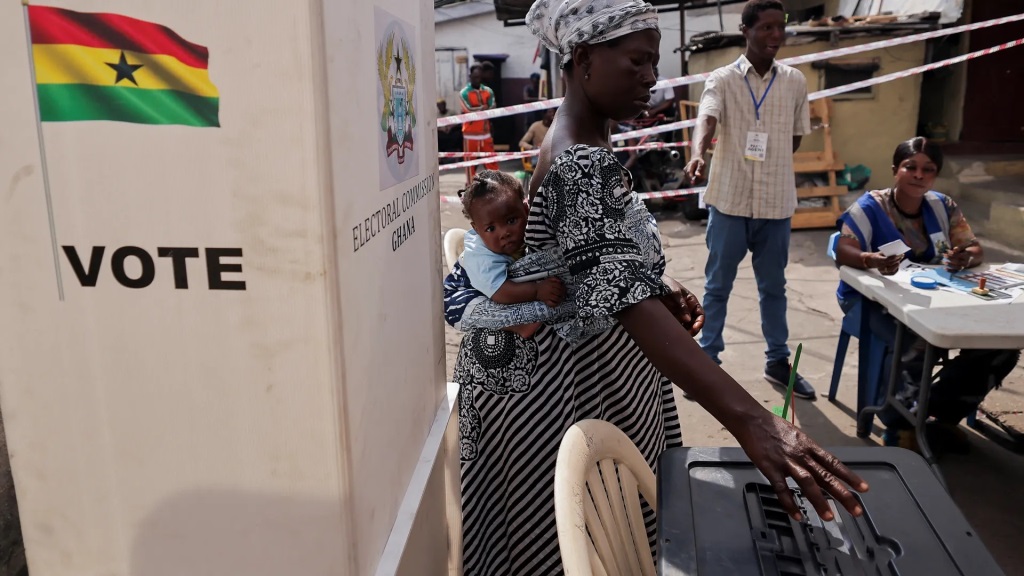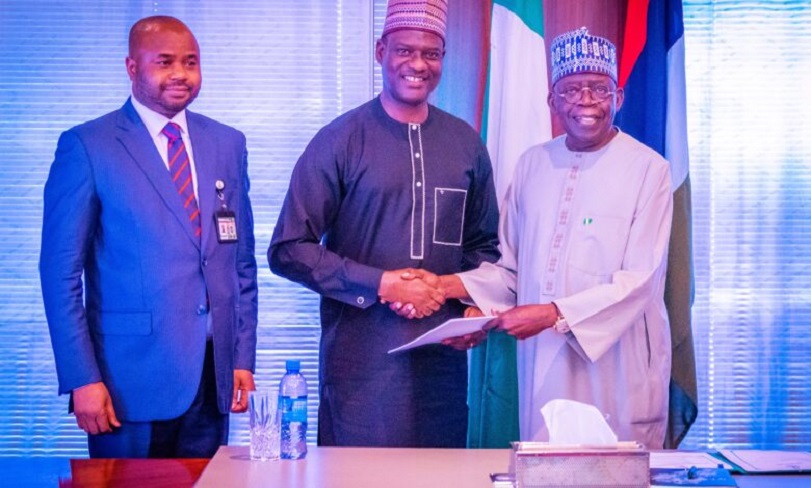Feature/OPED
What’s Inside Nigeria’s Foreign Reserves?

By Feyi Fawehinmi
It was former president Obasanjo who started this whole business of turning the nation’s foreign reserves into an achievement to be celebrated.
When Obasanjo took office in May 1999, Nigeria’s foreign reserves were just under $5 billion. By the time he left in May 2007, it was $43 billion.
But beyond that, there was a difference in the composition of the reserves from today. For simplicity, let’s distinguish the two types of reserves as Paper and Cash Money. Out of the $43 billion left by Obasanjo, around $11 billion was Cash Money.
Cash Money is money in the bank that you have not spent. You can dip into it on a rainy day. The best example of this for Nigeria is the Excess Crude Account (ECA). But Paper is quite different. Imagine that in March, Nigeria sold crude oil and earned $1 billion from it. That money goes into a CBN account abroad. CBN calculates the naira equivalent at the official rate and gives it to the FG i.e. N305 billion. The FG takes the money and pays salaries, wastes some and the rest disappears. The key thing to note here is that once the CBN has given the FG naira, the dollars no longer belong to the FG. The FG cannot spend that $1 billion again even though it is sitting there as part of Nigeria’s reserves. So what is it for? Let’s say a guy named Pastor Oyoyo wants to import a set of drums, guitars and hair cream for his new church, Fire for Fire InterGalactic Ministries. The total for all the imports come to $1 million. He gives his bank N360 million, his bank gives maybe N350 million to CBN and CBN gives $1 million to his bank. The bank gives him maybe $999,990 and he uses the money to pay for the imports.
So, we come to the current reserves. A few days ago, the CBN announced it had hit $46 billion. In a recent speech, President Buhari also boasted that his government had grown the foreign reserves from $24 billion in 2016 to $46 billion today using its special Magique Systeme.
But there’s something interesting about this growth – the big change has all happened in the last year or so. What did Godwin Emefiele (popularly called Meffy) do to achieve this? This growth has three components.
Component 1 – Since February 2017, Nigeria has issued $7.3 billion worth of Eurobond debt (02/17 – $1.5 billion, 06/17 – $300 million, 11/17 – $3 billion, 02/18 – $2.5 billion).
For context, from 2011 to 2015, Nigeria only did $1.5 billion of Eurobonds. When Nigeria sells Eurobonds, the dollars are paid to CBN. Meffy then converts it to naira and gives the naira to the FG. In other words, that $7.3 billion is added to Nigeria’s reserves as part of the Paper Reserves. Again, the FG cannot spend it because it has already collected the naira equivalent.
Component 2 – Nigerian banks have lately been practicing an innovative type of banking economists and scholars have described as Advanced Shashe Banking (ASB).
Imagine a Nigerian bank named Seneat. This bank goes abroad and borrows $1 billion via a Eurobond at 7 percent interest. It then does a swap with Meffy where it gives the $1 billion to CBN at say N350 to $1 with an agreement to buy it back in a year time at say N360 to $1. This means that no matter what happens in a year time, CBN must sell $1 billion back to Seneat at that rate. Seneat now takes its N350 billion and buys lots and lots of FG treasury bills at 17 percent while Meffy adds the $1 billion to the reserves. CBN has stopped publishing the swaps numbers since last year but I have some very clever friends who have calculated the current total to be $6 billion.
Component 3 – Since the CBN ‘stabilised’ the forex market last year with the launch of the I&E Window, much more foreign investment than before has come in. This is mostly made up of FPI where foreign investors bring in money to buy shares and government bonds. It’s different from FDI which is to build factories etc. Nothing wrong with FPI of course but its nice(r) when you have both. Again, they give their dollars to CBN and get naira to buy the shares they want. When they want to leave, CBN must collect their naira and give them dollars.
And from experience, we know they usually run away close to elections in Nigeria given the way Nigeria behaves around that time. So how much is this component? It is hard to tell as CBN does not publish the numbers but I calculate to be around $9bn.
I have simplified the components to save time and space. The only portion of the current reserves that is Cash Money is the ECA which has $2.3 billion.
But as I showed in my previous column, all the money in the ECA has been borrowed against which means it’s also Paper.
Next time you hear the FG boasting about growing the reserves, remember it is costing quite a lot to grow it this way. And then decide for yourself how much credit to allocate to Meffy and the FG for it. 800 words are enough for the wise.
Feature/OPED
The Future of Payments: Key Trends to Watch in 2025

By Luke Kyohere
The global payments landscape is undergoing a rapid transformation. New technologies coupled with the rising demand for seamless, secure, and efficient transactions has spurred on an exciting new era of innovation and growth. With 2025 fast approaching, here are important trends that will shape the future of payments:
1. The rise of real-time payments
Until recently, real-time payments have been used in Africa for cross-border mobile money payments, but less so for traditional payments. We are seeing companies like Mastercard investing in this area, as well as central banks in Africa putting focus on this.
2. Cashless payments will increase
In 2025, we will see the continued acceleration of cashless payments across Africa. B2B payments in particular will also increase. Digital payments began between individuals but are now becoming commonplace for larger corporate transactions.
3. Digital currency will hit mainstream
In the cryptocurrency space, we will see an increase in the use of stablecoins like United States Digital Currency (USDC) and Tether (USDT) which are linked to US dollars. These will come to replace traditional cryptocurrencies as their price point is more stable. This year, many countries will begin preparing for Central Bank Digital Currencies (CBDCs), government-backed digital currencies which use blockchain.
The increased uptake of digital currencies reflects the maturity of distributed ledger technology and improved API availability.
4. Increased government oversight
As adoption of digital currencies will increase, governments will also put more focus into monitoring these flows. In particular, this will centre on companies and banks rather than individuals. The goal of this will be to control and occasionally curb runaway foreign exchange (FX) rates.
5. Business leaders buy into AI technology
In 2025, we will see many business leaders buying into AI through respected providers relying on well-researched platforms and huge data sets. Most companies don’t have the budget to invest in their own research and development in AI, so many are now opting to ‘buy’ into the technology rather than ‘build’ it themselves. Moreover, many businesses are concerned about the risks associated with data ownership and accuracy so buying software is another way to avoid this risk.
6. Continued AI Adoption in Payments
In payments, the proliferation of AI will continue to improve user experience and increase security. To detect fraud, AI is used to track patterns and payment flows in real-time. If unusual activity is detected, the technology can be used to flag or even block payments which may be fraudulent.
When it comes to user experience, we will also see AI being used to improve the interface design of payment platforms. The technology will also increasingly be used for translation for international payment platforms.
7. Rise of Super Apps
To get more from their platforms, mobile network operators are building comprehensive service platforms, integrating multiple payment experiences into a single app. This reflects the shift of many users moving from text-based services to mobile apps. Rather than offering a single service, super apps are packing many other services into a single app. For example, apps which may have previously been used primarily for lending, now have options for saving and paying bills.
8. Business strategy shift
Recent major technological changes will force business leaders to focus on much shorter prediction and reaction cycles. Because the rate of change has been unprecedented in the past year, this will force decision-makers to adapt quickly, be decisive and nimble.
As the payments space evolves, businesses, banks, and governments must continually embrace innovation, collaboration, and prioritise customer needs. These efforts build a more inclusive, secure, and efficient payment system that supports local to global economic growth – enabling true financial inclusion across borders.
Luke Kyohere is the Group Chief Product and Innovation Officer at Onafriq
Feature/OPED
Ghana’s Democratic Triumph: A Call to Action for Nigeria’s 2027 Elections

In a heartfelt statement released today, the Conference of Nigeria Political Parties (CNPP) has extended its warmest congratulations to Ghana’s President-Elect, emphasizing the importance of learning from Ghana’s recent electoral success as Nigeria gears up for its 2027 general elections.
In a statement signed by its Deputy National Publicity Secretary, Comrade James Ezema, the CNPP highlighted the need for Nigeria to reclaim its status as a leader in democratic governance in Africa.
“The recent victory of Ghana’s President-Elect is a testament to the maturity and resilience of Ghana’s democracy,” the CNPP stated. “As we celebrate this achievement, we must reflect on the lessons that Nigeria can learn from our West African neighbour.”
The CNPP’s message underscored the significance of free, fair, and credible elections, a standard that Ghana has set and one that Nigeria has previously achieved under former President Goodluck Jonathan in 2015. “It is high time for Nigeria to reclaim its position as a beacon of democracy in Africa,” the CNPP asserted, calling for a renewed commitment to the electoral process.
Central to CNPP’s message is the insistence that “the will of the people must be supreme in Nigeria’s electoral processes.” The umbrella body of all registered political parties and political associations in Nigeria CNPP emphasized the necessity of an electoral system that genuinely reflects the wishes of the Nigerian populace. “We must strive to create an environment where elections are free from manipulation, violence, and intimidation,” the CNPP urged, calling on the Independent National Electoral Commission (INEC) to take decisive action to ensure the integrity of the electoral process.
The CNPP also expressed concern over premature declarations regarding the 2027 elections, stating, “It is disheartening to note that some individuals are already announcing that there is no vacancy in Aso Rock in 2027. This kind of statement not only undermines the democratic principles that our nation holds dear but also distracts from the pressing need for the current administration to earn the trust of the electorate.”
The CNPP viewed the upcoming elections as a pivotal moment for Nigeria. “The 2027 general elections present a unique opportunity for Nigeria to reclaim its position as a leader in democratic governance in Africa,” it remarked. The body called on all stakeholders — including the executive, legislature, judiciary, the Independent National Electoral Commission (INEC), and civil society organisations — to collaborate in ensuring that elections are transparent, credible, and reflective of the will of the Nigerian people.
As the most populous African country prepares for the 2027 elections, the CNPP urged all Nigerians to remain vigilant and committed to democratic principles. “We must work together to ensure that our elections are free from violence, intimidation, and manipulation,” the statement stated, reaffirming the CNPP’s commitment to promoting a peaceful and credible electoral process.
In conclusion, the CNPP congratulated the President-Elect of Ghana and the Ghanaian people on their remarkable achievements.
“We look forward to learning from their experience and working together to strengthen democracy in our region,” the CNPP concluded.
Feature/OPED
The Need to Promote Equality, Equity and Fairness in Nigeria’s Proposed Tax Reforms

By Kenechukwu Aguolu
The proposed tax reform, involving four tax bills introduced by the Federal Government, has received significant criticism. Notably, it was rejected by the Governors’ Forum but was still forwarded to the National Assembly. Unlike the various bold economic decisions made by this government, concessions will likely need to be made on these tax reforms, which involve legislative amendments and therefore cannot be imposed by the executive. This article highlights the purposes of taxation, the qualities of a good tax system, and some of the implications of the proposed tax reforms.
One of the major purposes of taxation is to generate revenue for the government to finance its activities. A good tax system should raise sufficient revenue for the government to fund its operations, and support economic and infrastructural development. For any country to achieve meaningful progress, its tax-to-GDP ratio should be at least 15%. Currently, Nigeria’s tax-to-GDP ratio is less than 11%. The proposed tax reforms aim to increase this ratio to 18% within the next three years.
A good tax system should also promote income redistribution and equality by implementing progressive tax policies. In line with this, the proposed tax reforms favour low-income earners. For example, individuals earning less than one million naira annually are exempted from personal income tax. Additionally, essential goods and services such as food, accommodation, and transportation, which constitute a significant portion of household consumption for low- and middle-income groups, are to be exempted from VAT.
In addition to equality, a good tax system should ensure equity and fairness, a key area of contention surrounding the proposed reforms. If implemented, the amendments to the Value Added Tax could lead to a significant reduction in the federal allocation for some states; impairing their ability to finance government operations and development projects. The VAT amendments should be holistically revisited to promote fairness and national unity.
The establishment of a single agency to collect government taxes, the Nigeria Revenue Service, could reduce loopholes that have previously resulted in revenue losses, provided proper controls are put in place. It is logically easier to monitor revenue collection by one agency than by multiple agencies. However, this is not a magical solution. With automation, revenue collection can be seamless whether it is managed by one agency or several, as long as monitoring and accountability measures are implemented effectively.
The proposed tax reforms by the Federal Government are well-intentioned. However, all concerns raised by Nigerians should be looked into, and concessions should be made where necessary. Policies are more effective when they are adapted to suit the unique characteristics of a nation, rather than adopted wholesale. A good tax system should aim to raise sufficient revenue, ensure equitable income distribution, and promote equality, equity, and fairness.
-

 Feature/OPED5 years ago
Feature/OPED5 years agoDavos was Different this year
-
Travel/Tourism8 years ago
Lagos Seals Western Lodge Hotel In Ikorodu
-

 Showbiz2 years ago
Showbiz2 years agoEstranged Lover Releases Videos of Empress Njamah Bathing
-

 Banking6 years ago
Banking6 years agoSort Codes of GTBank Branches in Nigeria
-

 Economy2 years ago
Economy2 years agoSubsidy Removal: CNG at N130 Per Litre Cheaper Than Petrol—IPMAN
-

 Banking2 years ago
Banking2 years agoFirst Bank Announces Planned Downtime
-

 Sports2 years ago
Sports2 years agoHighest Paid Nigerian Footballer – How Much Do Nigerian Footballers Earn
-

 Technology4 years ago
Technology4 years agoHow To Link Your MTN, Airtel, Glo, 9mobile Lines to NIN






















